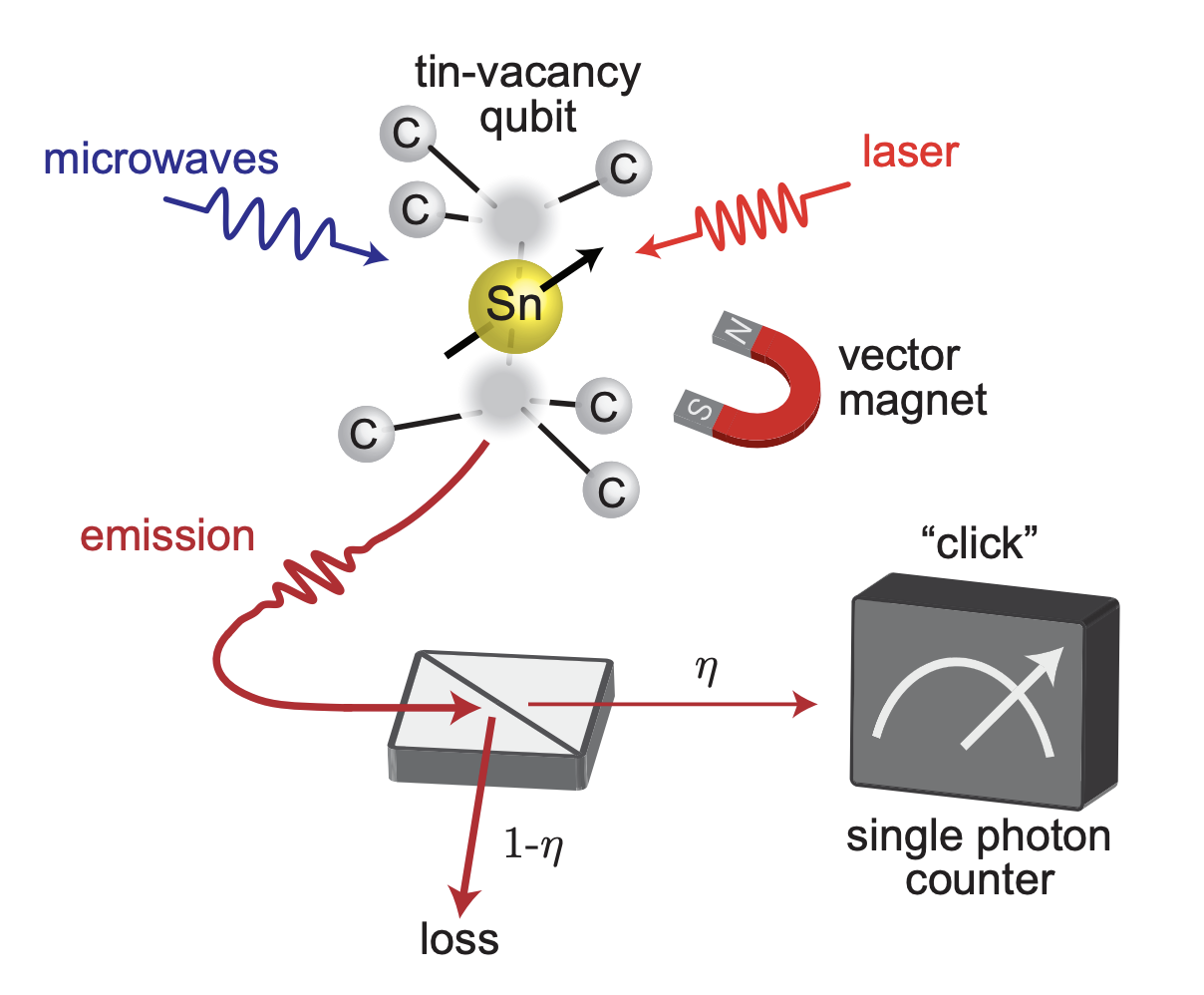The Tin-Vacancy (SnV) center in diamond is emerging as a promising platform for building advanced quantum networks due to its favorable optical and spin properties. It offers bright emission, insensitivity to electronic noise, and long spin coherence times at temperatures above 1 Kelvin. The SnV’s potential lies in its ability to overcome the trade-off between optical readout and spin control, a key challenge in quantum technologies. Despite some challenges, the SnV has shown promise in demonstrating rapid spin control and high-fidelity readout, making it a valuable tool for studying quantum mechanics and advancing quantum networks.
What is the Tin-Vacancy Qubit in Diamond and Why is it Important?
The Tin-Vacancy (SnV) center in diamond is an emerging platform for building the next generation of long-distance quantum networks. This is due to the SnV’s favorable optical and spin properties, including bright emission, insensitivity to electronic noise, and long spin coherence times at temperatures above 1 Kelvin. The SnV is a negatively charged center in diamond, and its properties make it an ideal candidate for quantum technologies.
The SnV’s potential lies in its ability to overcome the trade-off between optical readout and spin control inherent to group-IV centers in diamond. This is a significant development as it addresses a key challenge in the advancement of quantum technologies. The SnV’s properties also make it a useful tool for studying the fundamental interplay between measurement and decoherence in quantum mechanics.
The SnV’s potential for quantum technologies is further highlighted by its compatibility with rapid microwave spin control. This compatibility is crucial for the development of quantum networks, which require efficient spin-photon interfaces, long spin coherence times, and compatibility with nanophotonics.
How Does the SnV Compare to Other Quantum Platforms?
The choice of quantum platform is crucial in addressing the challenges of scaling quantum networks. Current state-of-the-art quantum networks consist of three nodes, each based on a single nitrogen-vacancy (NV) center in diamond. However, the NV is not the optimal qubit for future quantum networks due to its sensitivity to electrical noise and a low probability of emission into its zero-phonon line (ZPL), which reduces entanglement generation rate.
Group-IV centers in diamond, including the SnV, have emerged as promising candidates to advance quantum networks. These centers have a centrosymmetric structure, which provides a first-order insensitivity to electrical noise. This allows for relative optical stability even within nanophotonic structures.
Among the group-IV centers, the silicon-vacancy (SiV) center is the most developed. However, due to its spin-orbit induced ground state splitting of 50 GHz, the SiV requires operation at millikelvin temperatures to avoid thermal decoherence. To avoid temperature-related issues, the SnV has emerged as a favorable alternative due to its larger minimum ground state splitting of 820 GHz.
What Recent Advances Have Been Made with the SnV?
Recent advances with the SnV platform include incorporation with nanophotonics, high-fidelity generation of single photons, nuclear spin control, and single-shot nuclear spin readout. These advances have been enabled by a large hyperfine coupling and high-fidelity microwave spin control using both moderately strained and highly strained centers.
However, recent work on SnV spin control has highlighted a complicated relationship between the performance of spin polarization, coherent microwave spin control, and spin readout as functions of strain and the orientation of the applied magnetic field. There is a general trade-off between optimizing for high-fidelity microwave spin control using high strain and certain magnetic field orientations, and optimizing readout using low strain and a magnetic field aligned with the spin dipole axis.
Despite these challenges, the SnV has shown promise in demonstrating rapid spin control and high-fidelity readout. This is a significant development as it brings into question if rapid spin control and high-fidelity readout are compatible for the SnV, as has previously been shown for the SiV.
What Does the Future Hold for the SnV?
The future of the SnV is promising, with the potential to overcome significant hurdles in the development of SnV-based quantum technologies. The SnV’s properties make it a valuable tool for studying the fundamental interplay between measurement and decoherence in quantum mechanics.
Furthermore, the SnV’s compatibility with rapid microwave spin control and its ability to overcome the trade-off between optical readout and spin control inherent to group-IV centers in diamond make it a promising candidate for the advancement of quantum networks.
The SnV’s potential for quantum technologies is further highlighted by its compatibility with rapid microwave spin control. This compatibility is crucial for the development of quantum networks, which require efficient spin-photon interfaces, long spin coherence times, and compatibility with nanophotonics.
What are the Implications of this Research?
This research has broad implications for the study of solid-state quantum emitters and the development of quantum technologies. The SnV’s properties and potential make it a valuable tool for studying the fundamental interplay between measurement and decoherence in quantum mechanics.
The SnV’s compatibility with rapid microwave spin control and its ability to overcome the trade-off between optical readout and spin control inherent to group-IV centers in diamond make it a promising candidate for the advancement of quantum networks.
Furthermore, the SnV’s potential to overcome significant hurdles in the development of SnV-based quantum technologies has broad implications for the field of quantum mechanics. This research contributes to the understanding of the quantum measurement of solid-state emitters and the development of quantum technologies.
Publication details: “Single-Shot Readout and Weak Measurement of a Tin-Vacancy Qubit in
Diamond”
Publication Date: 2024-03-19
Authors: Eric I. Rosenthal, Souvik Biswas, Giovanni Scuri, Hope Lee, et al.
Source: arXiv (Cornell University)
DOI: https://doi.org/10.48550/arxiv.2403.13110

